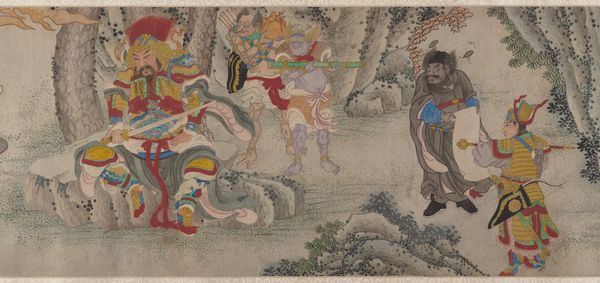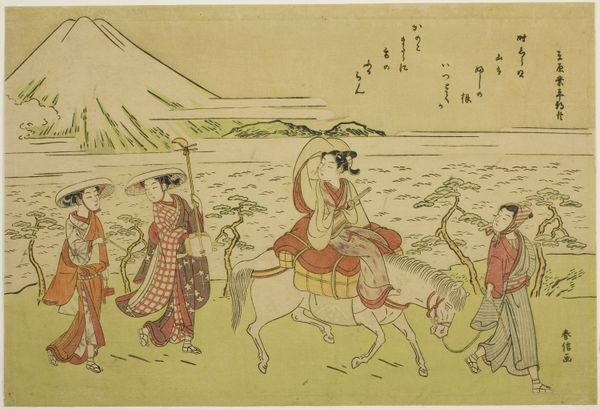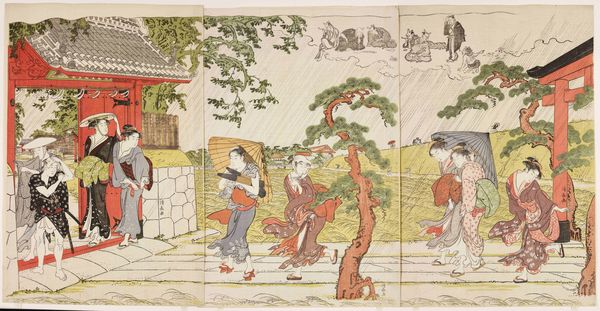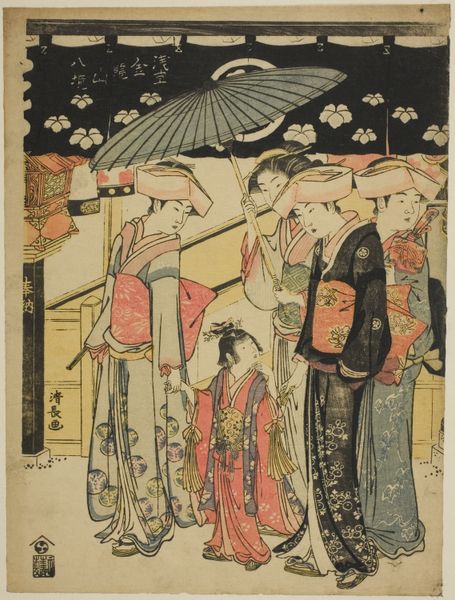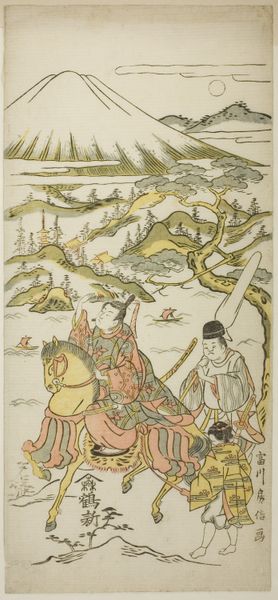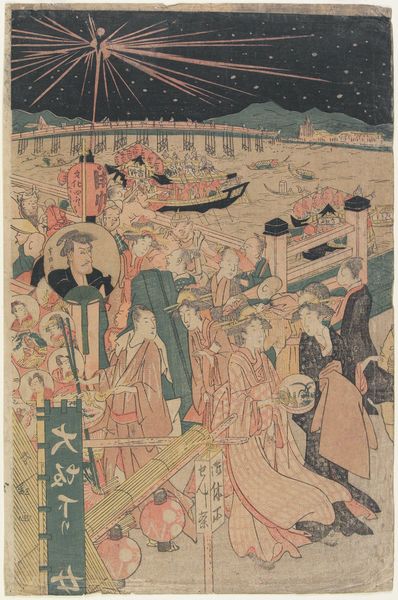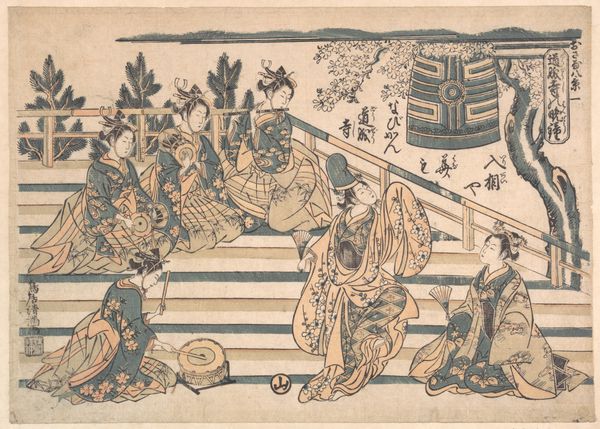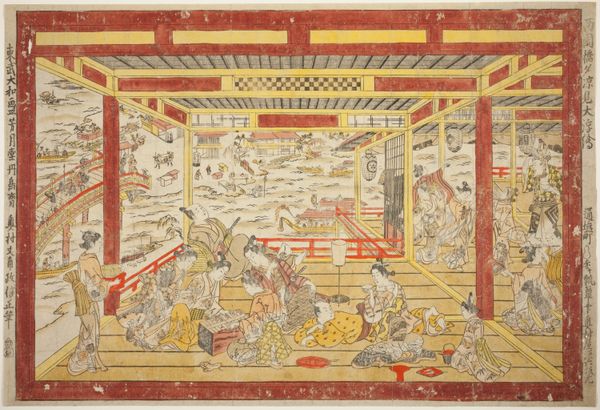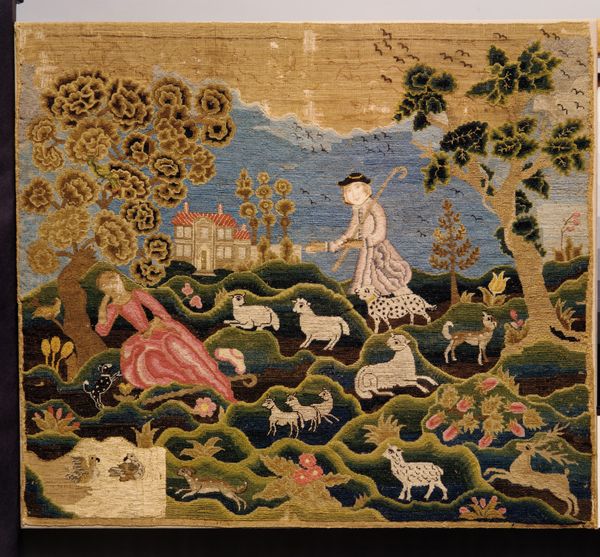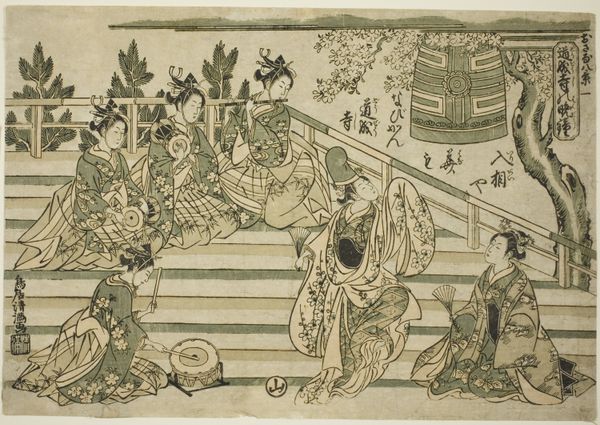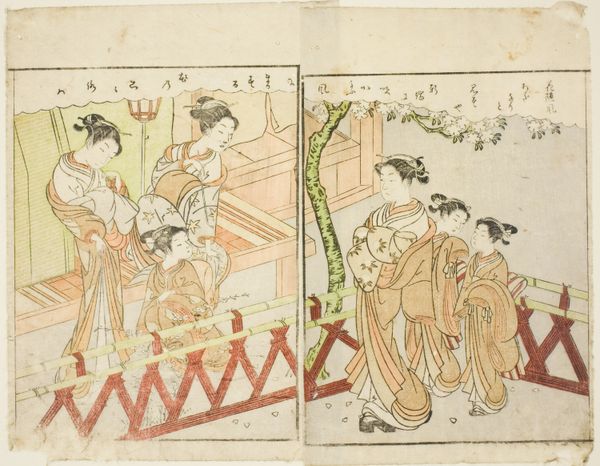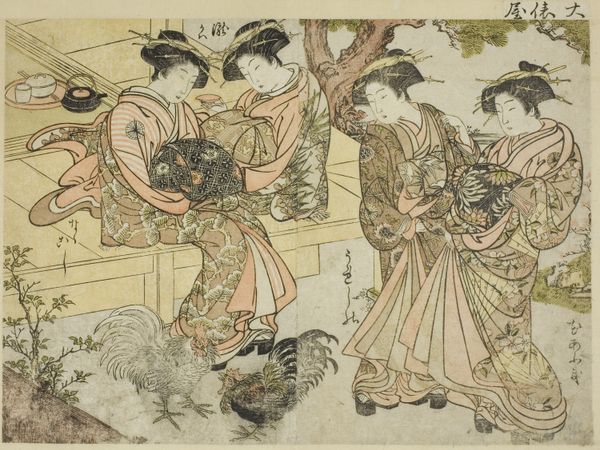
print, ink, woodblock-print
# print
#
asian-art
#
landscape
#
ukiyo-e
#
japan
#
ink
#
woodblock-print
#
cityscape
Dimensions: 7 11/16 x 12 3/8 in. (19.5 x 31.5 cm) (image)
Copyright: Public Domain
Curator: Welcome. Let’s consider Hiroshige’s woodblock print, “Akasaka,” dating from 1841 to 1842. It's currently held at the Minneapolis Institute of Art. Editor: What strikes me first is the feeling of transience. We have these figures journeying through the night. The strong verticality of the pine trees frame this moment, and even the color palette seems to evoke twilight. Curator: Precisely. We must look at the socio-political situation surrounding this piece. The commoners were increasingly navigating new economic pathways in this period. The rise of merchant classes challenged established hierarchies. Doesn't this depiction subtly acknowledge their movement and emerging agency within a rigid societal framework? Editor: Absolutely. You can tell a lot about society by the materials used and the methods of distribution. Consider the woodblock printing process itself; a collaborative effort bringing art to a wider audience. The consumption of these prints mirrors the increased circulation of goods and people during the Edo period. And the ink! So vital and precious! Curator: It also brings attention to those often overlooked in art historical narratives, such as the figures. Look closer at how they are portrayed—engaged in work but rendered within a landscape suffused with light. It humanizes their experience. Are they messengers, merchants, or everyday travelers seeking better economic opportunity? Editor: True, but I'm also interested in the labor that made this very image possible, the artisans carving these blocks. The level of precision and craftsmanship needed to create such depth with layers of color—it speaks to a whole system of production often glossed over. Curator: Yes, that’s part of the narrative. Reflecting on this, I wonder how Hiroshige envisioned this particular spot, Akasaka. Did he understand it as merely a stopping place, or perhaps as a space pregnant with possibility and the silent revolutions happening among common citizens of the Edo period? Editor: I like that reflection. For me, it drives home that there are so many hands involved and also brings home a reality of work behind even these seemingly peaceful journeys in Hiroshige's images.
Comments
No comments
Be the first to comment and join the conversation on the ultimate creative platform.
